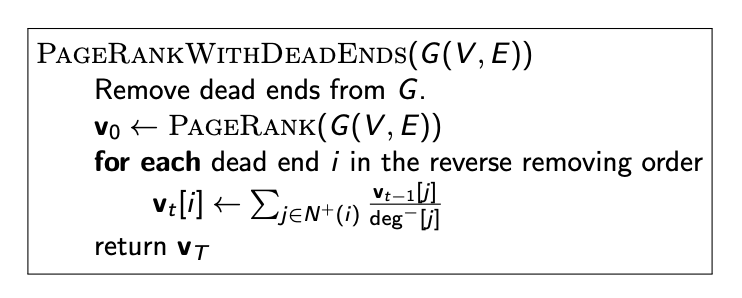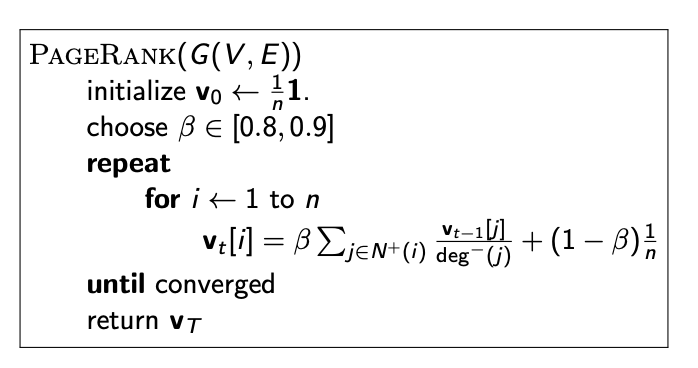Computing the PageRank score for a web dataset, and also finding nodes that are dead ends within a directed graph
A node is a dead end if it has no out-going edges or all its outoging edges point to dead ends.
For example, consider the graph A->B->C->D. All nodes A,B,C,D are dead ends by this definition. D is a dead end because it has no outgoing edges. C is a dead end because its only out-going neighbour, D, is a dead end. B is a dead end for the same reason, and so is A.
In order to find dead end nodes given a directed graph, we generate:
- An adjacency list where we list the children of each given node of the graph
- A reversed adjacency list where we list the parents of each given node of the graph
We can use the adjacency list to identify all nodes with no out-going edges and mark them as automatic dead ends and then using the list of these and our reversed adjacency list, figure out all the nodes that lead to dead ends.
To run the code given an input file of the format:
| fromNode | toNode |
|---|---|
| 0 | 1 |
| 0 | 2 |
| 1 | 2 |
We can run:
python3 dead_ends.py <options>
where the options are:
-i <input file path> -o <output file path>
PageRank is a mathematical algorithm that evaluates the quality and quantity of links to a webpage. This evaluation helps it to determine a relative score of the page's importance and authority.
In order to calculate the PageRank of webpages, we represent the pages as nodes of a graph and run the following algorithm on it:
To run the code given an input file of the format:
| fromNode | toNode |
|---|---|
| 0 | 1 |
| 0 | 2 |
| 1 | 2 |
We can run:
python3 page_rank.py <options>
where the options are:
-i <input file path> -o <output file path>

